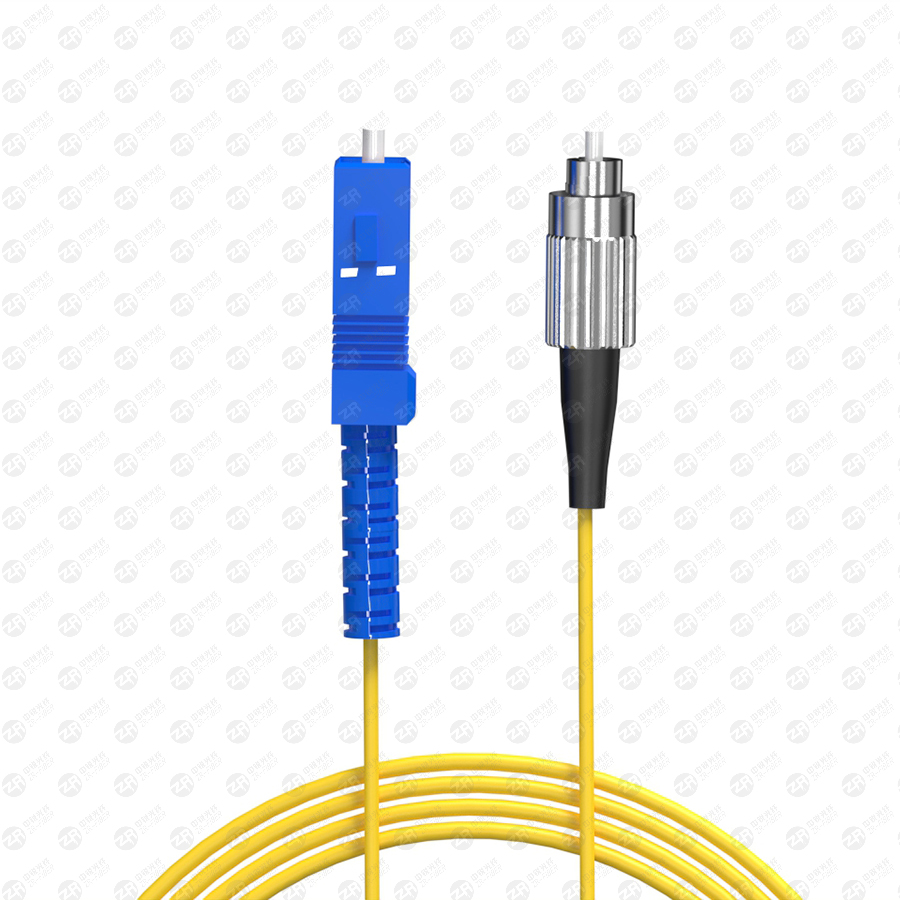- Sales SupportContact Sales
- Call us at: +(86) 15211074652
- Send us a email at: info@zr-fibercable.com
Classification characteristics of fiber optic jumpers
Classification of fiber optic jumpers
Optical fiber jumpers can be divided into common silicon-based optical fiber single-mode and multi-mode jumpers according to different transmission media, and other optical fiber jumpers such as plastics as transmission media;
According to the structure of the connector, it can be divided into: FC jumper, SC jumper, ST jumper, LC jumper, MTRJ jumper, MPO jumper, MU jumper, SMA jumper, FDDI jumper, E2000 jumper, DIN4 Jumper, D4 jumper, etc. in various forms. The more common fiber optic jumpers can also be divided into FC-FC, FC-SC, FC-LC, FC-ST, SC-SC, SC-ST, etc.
Single-mode fiber (Single-mode Fiber): Generally, the fiber optic jumper is indicated by yellow, and the connector and protective sleeve are blue; the transmission distance is longer.
Multi-mode fiber (Multi-mode Fiber): Generally, the optical fiber jumper is represented by orange, and some are represented by gray, and the connector and protective sleeve are beige or black; the transmission distance is short.

Classification of fiber optic jumpers
3. Matters needing attention in the use of fiber optic jumpers
The transceiver wavelengths of the optical modules at both ends of the fiber jumper must be the same, that is to say, the two ends of the fiber must be optical modules with the same wavelength. The simple way to distinguish is that the colors of the optical modules must be consistent.
Generally, the short-wave optical module uses multimode fiber (orange fiber), and the long-wave optical module uses single-mode fiber (yellow fiber) to ensure the accuracy of data transmission.
Do not excessively bend or loop the optical fiber during use, as this will increase the attenuation of light during transmission.
After using the optical fiber jumper, the optical fiber connector must be protected with a protective sleeve. Dust and oil will damage the coupling of the optical fiber. If the optical fiber connector is dirty, you can use a cotton swab dipped in alcohol to clean it, otherwise it will affect the communication quality.
1. Before use, the ceramic ferrule and ferrule end face of the optical fiber jumper must be wiped clean with alcohol and absorbent cotton.
2. The minimum bending radius of the optical fiber is less than 30mm during use.
3. Protect the ferrule and the end face of the ferrule to prevent bruising and pollution, and put on the dust cap in time after disassembly.
4. Do not look directly at the end face of the fiber when the laser signal is being transmitted.
5. In case of man-made or other force majeure damage, the damaged fiber jumper should be replaced in time.
6. Read the instructions carefully before installation, and carry out installation and debugging under the guidance of the engineers of the manufacturer or dealer.
7. If there is an abnormality in the optical fiber network or system, you can use the troubleshooting method to test one by one. When testing or troubleshooting jumper faults, you can do a continuity test first. Usually, you can use a visible laser pointer to illuminate the entire optical fiber link. Or further use a precision optical fiber insertion loss and return loss tester to test its various indicators. If the indicators are within the qualified range, the jumper indicates normal, otherwise it is unqualified.
Fourth, the characteristics of optical fiber jumper
1. Low insertion loss
2. Good repeatability
3. Large return loss
4. Good inter-plug performance
5. Good temperature stability
6. Strong tensile performance
Five, the application of fiber optic jumper
Optical fiber jumper products are widely used in: communication room, fiber-to-the-home, local area network, optical fiber sensor, optical fiber communication system, optical fiber connection transmission equipment, national defense combat readiness, etc. Applicable to cable TV network, telecommunication network, computer optical fiber network and optical test equipment. The subdivision is mainly used in several aspects.
You might be interested in
We use cookies to ensure that we give you the best experience on our website. By clicking on "Accept" or continuing to use this site, you agree to our use of cookies in accordance with our Cookie Policy .You can refuse the use of cookies here.
Accept

